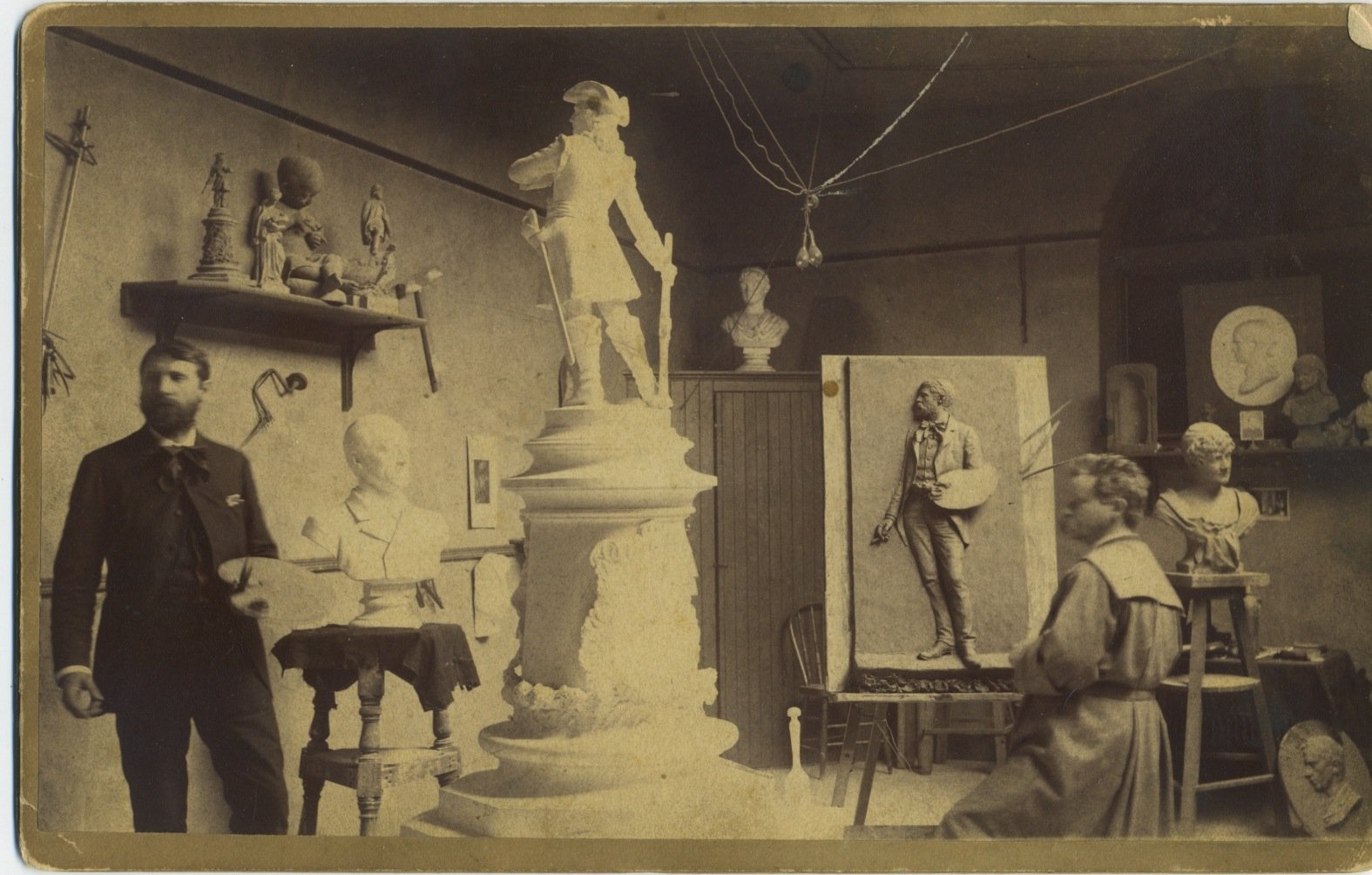Scandinavia and Scandinavian-America
The Talented Fjelde Family: Immigrant Artists from Norway
In this session, we will meet the Fjelde family, immigrants from Norway who were famous and award-winning artists in late 19th century Minneapolis. Perhaps best known was Jakob Fjelde, who made the famous Hiawatha and Minnehaha statue at Minnehaha Falls and the Minnesota monument at Gettysburg. His sisters Pauline and Thomane were European-trained textile artists who won a gold medal at the Chicago World’s Fair for their embroidery on the first Minnesota state flag. We will see many examples of their beautiful work in this presentation.
The Art of the Vikings
Famous for fighting, raiding, trading, and exploring, the Vikings also had a lively visual culture. They used wood, precious metals, stone, and textiles to create beautifully intricate objects and decoration on everything from ships to swords. Explore Viking art in this richly illustrated presentation.
Photo: Museum of Cultural History, University of Oslo / Kirsten Helgeland
The Stave churches of Norway
Known for their fascinating appearance and remarkable survival, the stave churches of Norway form an interesting connection to early medieval architecture and imagery, blending church design with elements of pre-Christian Scandinavian structures. Learn about these distinctive buildings, their decoration, and their history in this illustrated talk.
Photo: Fortidsminneforeningen
Knitting from Norway: Socks, Mittens, and Norwegian Sweaters
Famous for distinctive patterns and colors, Norwegian knitted garments—especially the well-known cardigans and pullovers—have a long and interesting history. From Selbu mittens to Lillehammer sweaters, this presentation traces the story of this enduring textile tradition.
Herbjørn Gausta and his Altar Paintings
Herbjørn Gausta was a leading light among Norwegian-American immigrant artists. Emigrating as a child, Gausta returned to Europe to study art before establishing his studio in Minneapolis. He remained tied to his fellow immigrants, especially with the four hundred or so altar paintings he made for Norwegian-American congregations. In this presentation, we will learn about Gausta’s fascinating life and look at his beautiful altar paintings.
Norwegian-American Altar Painting
Remembering the decorated church altars in Norway, immigrants to America continued this tradition by using paintings created by Norwegian-American artists, including Herbjørn Gausta and Sarah Raugland. These altar paintings were especially popular between about 1880 and 1920, and many are still in use today. In this presentation, we meet the artists, see some of the most popular subjects, and learn a bit about how church politics affected the market for these works.
AND THERE HE PRAYED: MARCUS GRØNVOLD’S ALTAR FOR TRINITY CHURCH IN MINNEAPOLIS
Founded in 1868, Trinity was Minneapolis’s earliest Norwegian Lutheran congregation. After decades on the eastern edge of downtown, Trinity built a new church in the Cedar-Riverside neighborhood. One of the final pieces of the new sanctuary was an altar painting, shipped to Minneapolis from the Munich studio of a Norwegian artist, Marcus Grønvold. This presentation tracks the story of the painting and the unusual saga of its journey to—and around—Minneapolis.
Scandinavian-American Churches in the Twin Cities
Hundreds of thousands of Scandinavian immigrants flooded into Minneapolis and St. Paul in the late 19th and early 20th centuries. As they put down roots, they established scores of congregations and other religious institutions for worship, service, and fellowship. Many of these places have vanished, but a number of the “descendants” survive, even as their Scandinavian origins are now obscured or hidden. In this slide presentation, we’ll look at some of the earliest congregations through the heyday of the late 1800s-early 1900s and at current buildings and places related to the Scandinavian immigrant traditions.
I can adapt this presentation to emphasize a specific Scandinavian group or to focus on either Minneapolis or St. Paul; I can also tell the story of a particular Scandinavian congregation’s locations and buildings.








